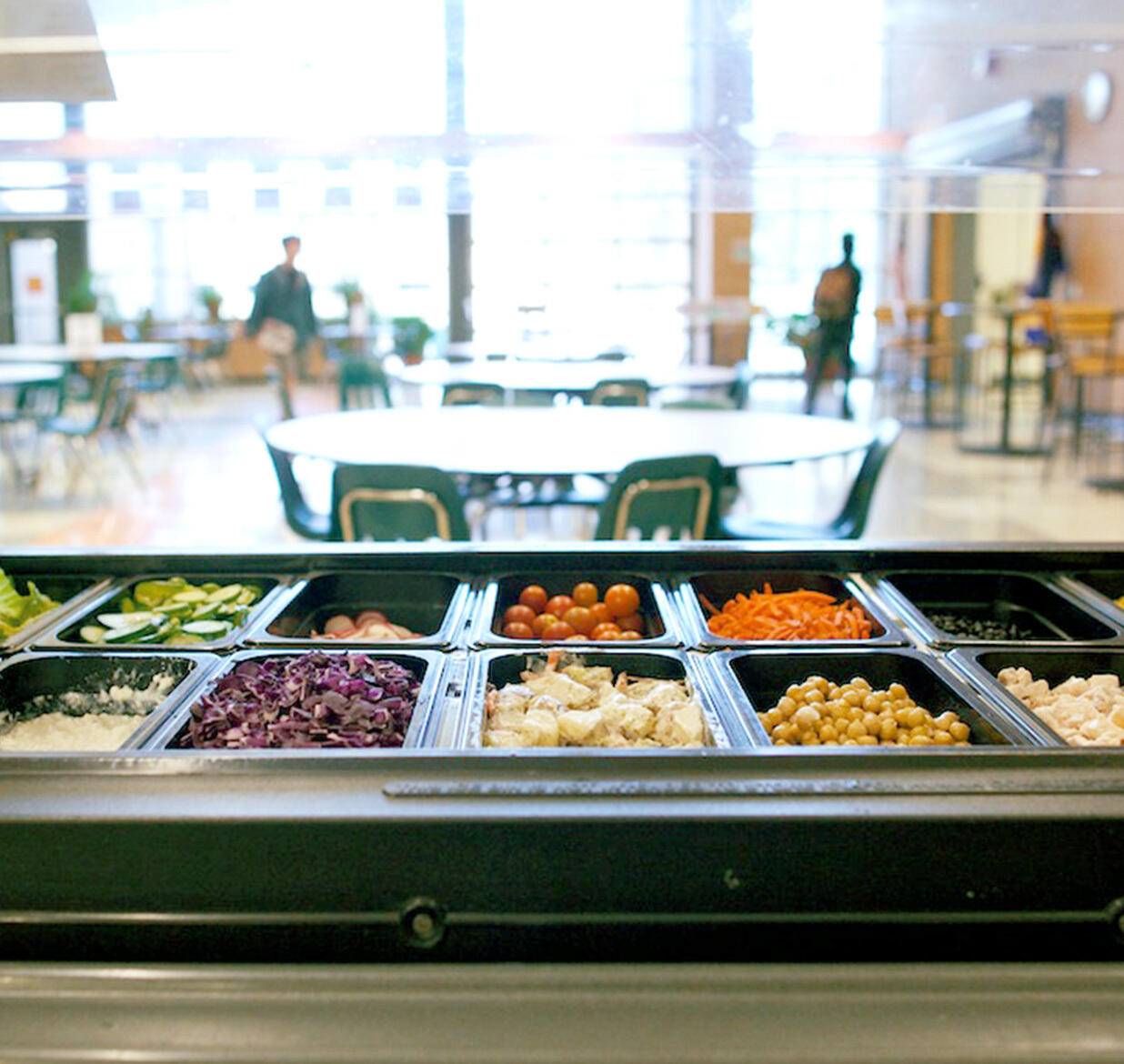
4 Common Salad Bar Implementation Challenges & How to Overcome Them
We took a look at 5 years of evaluations to determine the most common challenges reported by salad bar grantees, along with resources to help districts overcome them.
July 23, 2019 | By Messa
Twice a year, the Salad Bars to Schools program runs an evaluation report where grantees report back on their successes, share statistical and numerical increases and discuss some of the challenges that they have experienced. While 96% of districts reported that their salad bars are still in use, we have looked at all of our evaluations over the past 5 years and identified the four most common challenges salad bar recipients have reported. We then compiled them here alongside resources to help all districts overcome these common challenges.
This blog has been republished with the permission of Salad Bars to Schools.
Our biggest challenge is planning the right quantities of food. How do we provide a salad bar that still looks bountiful at the last serving line without an excessive amount of food waste?
We understand the challenges of projecting the exact volume you will need of each ingredient on the salad bar, but forecasting your purchases is possible! Once you successfully navigate your first year of salad bar implementation, you will then have historical data to base your future purchases on. Tips from our experts:
- Analyze your purchases, commodity, and DoD records to establish how much volume in your current lunch menus are attributable to fruit and vegetables in your current cycles.
- If you have them, you can export your digital production records to see the current fruit and vegetables served at each meal period, align those numbers with your purchase and commodity history to get an accurate estimate of current volume served.
- If you don’t have digital production records, you can use a large sample of paper records to manually calculate a percentage of fruit and vegetables served. This percentage can then be applied to the volume of purchases made.
- If your district is less experienced with fresh fruit and vegetables, head over to The Lunch Box for resources to help you develop a realistic RFP for produce and predetermine salad bar ingredient costs.
Our staff was struggling to get all of their fresh produce prepared and on the salad bar before the lunch line started.
Staff training is an important component to fully prepare before you implement salad bars district-wide. Cafeterias are working within limited labor hours when preparing to implement salad bars, but we have seen a lot of success when foodservice directors can plan to factor training time into the budget.
If your bars arrive before you can schedule training and plan your budget, implementing a salad bar at one site, then using that site as a training location has been an effective way for districts to efficiently train their staff. Some ideas to help plan your training schedule:
- If your district cannot allocate general fund money to the project, local sponsors and grants are viable options.
- A focus on preparation and food handling training will help decrease the time spent on food prep and can mitigate increased labor hour costs.
- Create well-articulated methods for ordering, receiving and sanitation before your salad bars arrive. If you cannot provide professional development training for your staff, this will help them understand salad bar protocols, and minimize increase costs that your district might incur through inefficiencies.
Identifying whether the student’s plate contains all of the required meal components is a challenge given the format of outlines and the number of students selecting the salad bar.
Similar to what we identified above, training your students before your bars arriving will help overcome this challenge. Food education is as important as food safety and can help create a healthy learning environment and academic success. We advocate that food service staff encourage students to make their own choices to complete their reimbursable meals. Identifying foods, tasting new fruits and vegetables and creating composed salads that provide blended tastes are all important lessons that can help students develop healthy eating habits.
- Using signs to illustrate and train students about portion size is a helpful way to help students understand for themselves if their plate meets the reimbursable meal requirements.
- Menu boards, as well as visual aids, while students are in line, can help remind students before they get to the bars, what the meal requirements are.
- Cafeteria activities such as Rainbow Days are a great way to engage your students once salad bars are in place, and can help introduce foods they might not be used to eating.
Our staff was struggling to get all of their fresh produce prepared and on the salad bar before the lunch line started.
Staff training is an important component to fully prepare before you implement salad bars district-wide. Cafeterias are working within limited labor hours when preparing to implement salad bars, but we have seen a lot of success when foodservice directors can plan to factor training time into the budget.
If your bars arrive before you can schedule training and plan your budget, implementing a salad bar at one site, then using that site as a training location has been an effective way for districts to efficiently train their staff. Some ideas to help plan your training schedule:
- If your district cannot allocate general fund money to the project, local sponsors and grants are viable options.
- A focus on preparation and food handling training will help decrease the time spent on food prep and can mitigate increased labor hour costs.
- Create well-articulated methods for ordering, receiving and sanitation before your salad bars arrive. If you cannot provide professional development training for your staff, this will help them understand salad bar protocols, and minimize increase costs that your district might incur through inefficiencies.
One of the largest challenges we deal with has been supplementing the budget for the additional cost of the fruits and vegetables.
It’s important to remember that when adding a new feature to your menu like salad bars, rolling over the prior year’s food expenses as the cost projection for your budget is not accurate enough. If you plan to have your salad bar replace your current fruit and vegetable side costs in your future menu cycles, a reasonable budget is possible and fairly straightforward to project.
- Head to the food costs section of The Lunch Box to help project your costs in preparation for your salad bar or for adjusting your current costs.
Despite these challenges, salad bars have proven to be an incredibly useful way for districts to incorporate their daily fruit and vegetable requirement while encouraging students to make their own healthy choices and try new things. There is currently a high demand for salad bar grants through Salad Bars to Schools, so getting your application in and working through the resources on The Lunch Box while you wait will help you hit the ground running when your bar is ultimately funded.
Please don’t hesitate to contact us if you need help finding a particular resource, or if we didn’t answer your question in this blog. To learn more and submit your application, click here.







